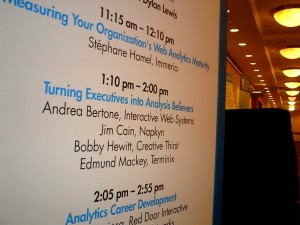 Working with other people is hard.
Working with other people is hard.
One group believes THIS while another group believes THAT.
There are obstacles within organizations that keep us from moving forward.
Yet we keep going.
We’re met with resistance, roadblocks and frustrations.
Sometimes the path before us seems impossible,
Yet we keep going.
Misunderstood and irritated, we wonder what do I have to say to get through to these people?
If they would just listen to me,
listen to the data,
things would be different.
If we could get over resistance we could get to action.
If we could get over the roadblocks we would have clear passage.
If we could be understood then we could embrace change and everything would be possible.
In spite of it all – we keep going.
And we should.
Because, what we do makes a difference.
Every foothold we gain gets us closer to moving the needle.
We keep going, because we want to make a difference.
We keep going because we want to matter.
To influence.
To have an impact.
To deliver results.
We have to keep going.
We have to make a difference.
Because it’s very difficult to have a meaningful life without doing meaningful work.
But sometimes it’s not always up to the data or us.
Other roadblocks in the organization stand in our way.
Other executives don’t believe.
They can’t see what we see.
You’re about to read how to get around the roadblocks of people, how to get more buy in and how to deliver results.
By using the framework below, you’ll be able to get executives to believe in you, get more buy in, to make a difference. This framework is based on how people make decisions and it’s going to take a bit of work on your part to apply.
But First…
You’ll need to learn a bit about how people make decisions.
Decision-making is like a knee jerk response.
It’s mostly predictable.
If we can understand how decisions are made then we can adapt our approach to getting buy-in.
We can prepare in a systematic way, and win permission to make a difference.
But that’s going to require us to change our approach, so that we can change the organization.
But once we understand how decisions are made.
Once we master it.
We can make a difference.
We can move the needle.
We can improve the industry.
We can do meaningful work and live meaningful lives.
When we’re trying to sell up or across an organization, it’s sometimes difficult to tell if we’ve got a green, yellow or red light.
Should we speed up and run with championing an idea directly to the top?
Should we slow down and proceed with caution?
Should we put the breaks on and think about the data?
Should we go this way or that way?
People make decisions the exact same way every single time they are faced with a major choice.
Each one of us has a preference for decision-making. A particular way in which we make almost every decision we face. Think of it as a default mode or a style of decision-making.
Our preference is set early in our careers based on our own unique experiences and reinforced with repetition.
Time For Some Exercise

I’d like you to do a little experiment.
- Cross your arms across your chest.
- Take note which arm is on top.
- Now uncross your arms and cross them again with the opposite arm on top.
This probably feels unnatural and uncomfortable.
You’re out of your comfort zone and you want to go back to your other arm on top.
We naturally default to doing things the way we’re most comfortable.
Decision-making is no different.
We each have a default mode or style of making choices.
So here’s the big take-a-way.
If you understand what type of decision-making style the executive you’re trying to influence uses, then you can alter your approach to fit that particular style in order to get permission to move the needle and generate results.
5 Types of Decision Makers
There are 5 types of decision-making styles, and I’ll go through all 5 and how to influence each.
No one style is better than another, and your decision-making style may be different than your personality.
Find the decision-making style of your executive below:
Charismatics
 Enthusiastic
Enthusiastic
They are passionate about new ideas and can easily envision possibilities of a proposal without getting bogged down in the details.
Risk Seekers
They embrace out-of-the-box thinking; they are usually entrepreneurs and mavericks.
Decisive
The make bold decisions quickly buy only when they are sure that others have thought through all the issues.
Bottom-liners
They cut to the chace quickly, demanding to know the headlines and bulleted items.
Thinkers
 Methodical
Methodical
They concern themselves with the details of how things work and are skilled at picking apart a problem.
Information-driven
They have an insatiable need for all kinds of information, customer surveys, market research, analysis and so on.
Qualitative & Precise
They are swayed by arguments and information based on hard data and need to explore the pros and cons of all options before moving forward.
Guarded and Cautious
They play their cards close to their chest and keep their emotions in check by relying heavily on rational thinking.
Skeptics
 Iconoclasts
Iconoclasts
They constantly question the status quo and will attack anything that is contrary to their world, especially if the source of information has not yet earned their trust.
Brazenly Outspoken
They are non-conformists who will say exactly what they think.
Fearlessly Confident
They are unafraid of being wrong and will often make bold risky decisions based on their gut feelings.
Assertive & Demanding
They have strong personalities will aggressively do what needs to be done – and they expect their staff to do the same.
Followers
 Devoted to tried & true
Devoted to tried & true
They stick to with what’s worked before, and they don’t try to fix something that’s not broken.
Averse to the new
They avoid any unexplored paths. They are not innovators, nor are they early adopters.
Deft people skills
They have great diplomatic skills and are excellent listeners and are adept at seeing the world through other people’s perspectives.
Difficult to identify
They wear many hats and can easily be confused for Charismatics, Skeptics and Thinkers.
Controllers
 Unyielding Perfectionists
Unyielding Perfectionists
They constantly push themselves as well as those around them. They feel any job can be done faster, cheaper and with higher quality.
Meticulous
They love details and can handle a staggering amount of information and minutiae details.
Proactive
They do not wait for others to act. They step up and do what needs to be done.
Fiercely Self-reliant
They do things their way and they make big decisions without advice or input from others.
Point A to Point B
So how do you move a decision maker from Point A to Point B?
Each decision-making type requires a different approach.
We’re going to go through each approach next and learn how to get each decision making style to believe in you.
And it’s dependent on your approach.
Getting Charismatics to Believe
Give the headlines first
Get to the point quickly, present the solution before describing the problem.
Stay grounded no matter what
Fight the urge to join in their excitement, focus on the bottom line, even if they don’t. Don’t be unemotional but slightly undersell everything that seems to make them excited, and be prepared to discuss the risks, this will convey a sense of realism in them and strengthen their trust in you.
Follow through
Even though Charismatics love new ideas, getting final commitment can be elusive. They might say “That is exactly what we need” but then delay the decision to proceed. They need to know that you or others have thought things through and is backed up by analysis.
Getting Thinkers to Believe
Tell your story chronologically
Never begin in the middle or the end of your story. Thinkers want to hear things from start to finish.
Involve the thinker and others in your process
Give all the details of the steps you used to arrive at your conclusions, and ask for help to fill in any holes that you might have in your data or methodology. Thinkers need others to think things through with them.
Be exhaustive but patient
Provide as much data as possible but after that give the thinker amble time to digest the material.
Getting Skeptics to Believe
Above all, establish credibility
Before doing anything else establish credibility. With it you’ll be able to argue your case and have them truly hear what you’re saying. Without it you might as well be talking to the wind.
Hold your ground, but find the middle ground
Stand firm against the battery of questions. If you surrender or become visibly shaken, you’ll loose all your credibility.
Keep your emotions and your ego in check
Avoid knee-jerk reactions. You need to depersonalize and remain rational. The aggressive tactics of a skeptic is just par for the course, responding with anger will just weaken your case.
Getting Followers to Believe
When in doubt, assume
Followers wear many guises; When you’re unsure of how to categorize someone, particularly if you’re getting conflicting signals, assume that person is a follower.
Supply proof, proof and more proof
Provide as much evidence as possible that your proposal has been successful in a number of similar situations. But keep it simple, concentrate on the problem and explain how the solution worked elsewhere.
Link the new to the old
Don’t take them out of their comfort zone. Before proposing anything new, be sure to lay the proper foundation. It sounds like this: “This is the way that we’ve always done it. The only difference is…” You should encourage them to make these connections.
Getting Controllers to Believe
Enable action but don’t force it
Provide controllers all the information they need, then back off and wait patiently until something compels them to act.
Build alliances
Often times the best way to handle controllers is to keep your contact to a minimum and instead work through their lieutenants. They will feel less compelled to exert their authority.
Draw your line and hold to it
With controllers, you often reach an impasse. Before presenting anything to them have a clear idea of what you need as well as what you can compromise, then stand firm on everything else.
Now it’s up to you
Try these out, make a difference and move the needle. Keep going.
This seems to me an indication of the maruitty of the industry and marketers in general when it comes to conversion rate optimization. We’re still in the early adopter stage testing impact full but low hanging fruit with landing pages, although they will probably always be a staple in CRO and testing. As the maruitty of CRO increases both in the industry and within individual organizations we should get higher up on that chain.